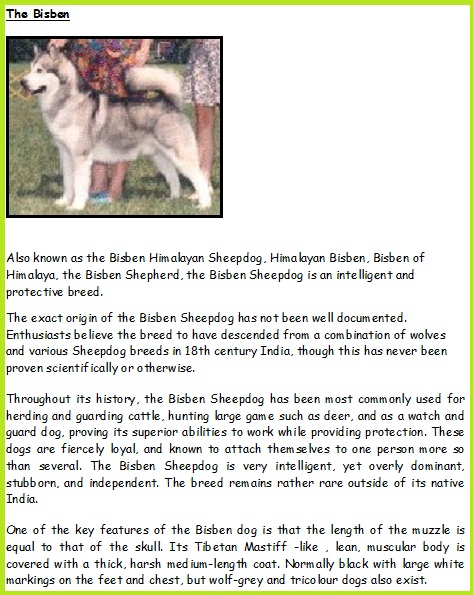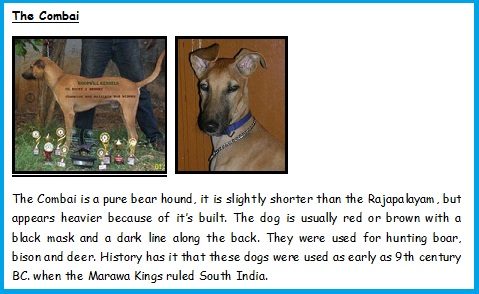Did you know...?
Fascinating and important pooch facts, information and resources!
Pet Care During Monsoons
While monsoons bring respite from the heat for people, it is not a season devoid of challenges for our pets. Pet parents need to be aware of these challenges and take appropriate actions so that our pets remain healthy during this season.
In this 4 part series, I would be discussing monsoon care for our pets. Part I relates to the Stress our pets face at this time of the year. Part 2 is a link to possible skin ailments. Part 3 talks about diet care and Part 4 pertains to some measures that can be taken to ensure a happy healthy pet.
Monsoon Care For Your Pet : Part 1 - Stress & Fear
The rains bring along thunder, lightning and screeching winds. This can be very overwhelming, frightening and stressful for your pet. They may hide, start shivering or become irritable, many-a-times even bark and bite and inevitably lose their appetite. It may also manifest in self- injury in the form of scratching and biting at their own skin causing wounds and also running away from their homes. Some dogs are more prone to this anxious behaviour than others. As pet parents, we need to identify these symptoms and take action.
The best way to calm the very anxious pet is to consult a vet for calming medication. The safest in my opinion is homeopathic medication. They are safe and with no side effects. However, the vet needs to be consulted for any form of medication. Ensure that the pet has an identification tag in case it runs away from home.
Some other measures that can be taken are:
In this 4 part series, I would be discussing monsoon care for our pets. Part I relates to the Stress our pets face at this time of the year. Part 2 is a link to possible skin ailments. Part 3 talks about diet care and Part 4 pertains to some measures that can be taken to ensure a happy healthy pet.
Monsoon Care For Your Pet : Part 1 - Stress & Fear
The rains bring along thunder, lightning and screeching winds. This can be very overwhelming, frightening and stressful for your pet. They may hide, start shivering or become irritable, many-a-times even bark and bite and inevitably lose their appetite. It may also manifest in self- injury in the form of scratching and biting at their own skin causing wounds and also running away from their homes. Some dogs are more prone to this anxious behaviour than others. As pet parents, we need to identify these symptoms and take action.
The best way to calm the very anxious pet is to consult a vet for calming medication. The safest in my opinion is homeopathic medication. They are safe and with no side effects. However, the vet needs to be consulted for any form of medication. Ensure that the pet has an identification tag in case it runs away from home.
Some other measures that can be taken are:
|
Monsoon Care For Your Pet : Part 2 - Monsoon Skin Ailments
I came across this wonderful article written by a vet that summarises the possible skin problems that may arise during the rainy season. Click here to read - A MUST READ.
I came across this wonderful article written by a vet that summarises the possible skin problems that may arise during the rainy season. Click here to read - A MUST READ.
Monsoon Care For Your Pet : Part 3 - Monsoon Diet Tips

Pet Diet care is very important during the monsoons. Since there is reduced activity and little outdoor exercise for the pet, it is common that there is voluntary reduction of food consumed. For this reason, it is important to ensure a well balanced diet. More so, to prevent illnesses like food poisoning and gastroenteritis, it s important to provide freshly prepared food every day.
Commercial food needs to be placed in airtight containers to prevent fungal growth. The diet needs to have enhanced levels of fibre and reduced levels of milk products. Buttermilk is a good substitute. Banana aids digestion and should be encouraged for pets. Cooked oats is nutritious and can be added to the regular diet of the pet. Meats need to be carefully selected as it can very quickly develop toxins leading to poisoning & gastro related diseases. Allergies to certain foods are not uncommon and a careful monitoring of your pet’s skin and poop is a necessity. The pet’s water needs to be replaced every 2-3 hours and the bowl washed each time.
Commercial food needs to be placed in airtight containers to prevent fungal growth. The diet needs to have enhanced levels of fibre and reduced levels of milk products. Buttermilk is a good substitute. Banana aids digestion and should be encouraged for pets. Cooked oats is nutritious and can be added to the regular diet of the pet. Meats need to be carefully selected as it can very quickly develop toxins leading to poisoning & gastro related diseases. Allergies to certain foods are not uncommon and a careful monitoring of your pet’s skin and poop is a necessity. The pet’s water needs to be replaced every 2-3 hours and the bowl washed each time.
Monsoon Care for your Pets: Part 4 - Additional Dos & Don’ts

There are some additional things that you can observe for keeping your pet healthy in the monsoon season. They are as below:
- Never let a pet remain wet. Dry it thoroughly
- A Raincoat is a must while going out. Pet shops also sell shoes for dogs of all sizes. However if your pet is not accustomed to wearing shoes, its paws need to be washed of all the muck and dirt, after every walk. Don’t forget to examine the stomach area – most medium and small dogs get their underside mucky too. This will prevent any fungal, bacterial or yeast infection.
3. Cut the hair in the under paw region to prevent fungal/ yeast or bacterial infection. Simultaneously keep nails trimmed.
4. Dab a little Dettol and water mix on cotton and wipe the under paw and the pastern region before taking the dog out. Dettol is a good
deterrent for ticks and fleas and other parasites.
5. It is advisable to reduce the length of the dog’s hair for easy detection of fleas, tick or infection. Weekly de-shedding is advisable as the
loose undergrowth can trap infections.
4. Dab a little Dettol and water mix on cotton and wipe the under paw and the pastern region before taking the dog out. Dettol is a good
deterrent for ticks and fleas and other parasites.
5. It is advisable to reduce the length of the dog’s hair for easy detection of fleas, tick or infection. Weekly de-shedding is advisable as the
loose undergrowth can trap infections.
|
6. Reduce frequency of baths. Pets can be sponged and dried thoroughly. Alternately dry shampoo
can be used. 7. Check for fleas and ticks everyday with a flea comb. 8. Matting of hair breeds infection. Seek the help of a groomer for matt removal. 9. Check for any skin abnormalities / rashes / redness / pustules / or hair shedding in patches. Consult the vet for medication. 10. Pet bedding needs to be dry and vacuumed at regular intervals 11. Allocate a space in the house for the pet to relieve itself during those heavy rain days and train it to use the space. 12. Give a lot of attention, play, love and care to ensure a happy healthy pet. |
Indian Dog Breeds
Dog Weight Chart
From: http://sportsandfitness1.com/tag/dog-weight-chart
© Copyright PoochMatters 2011 - All Rights Reserved





























